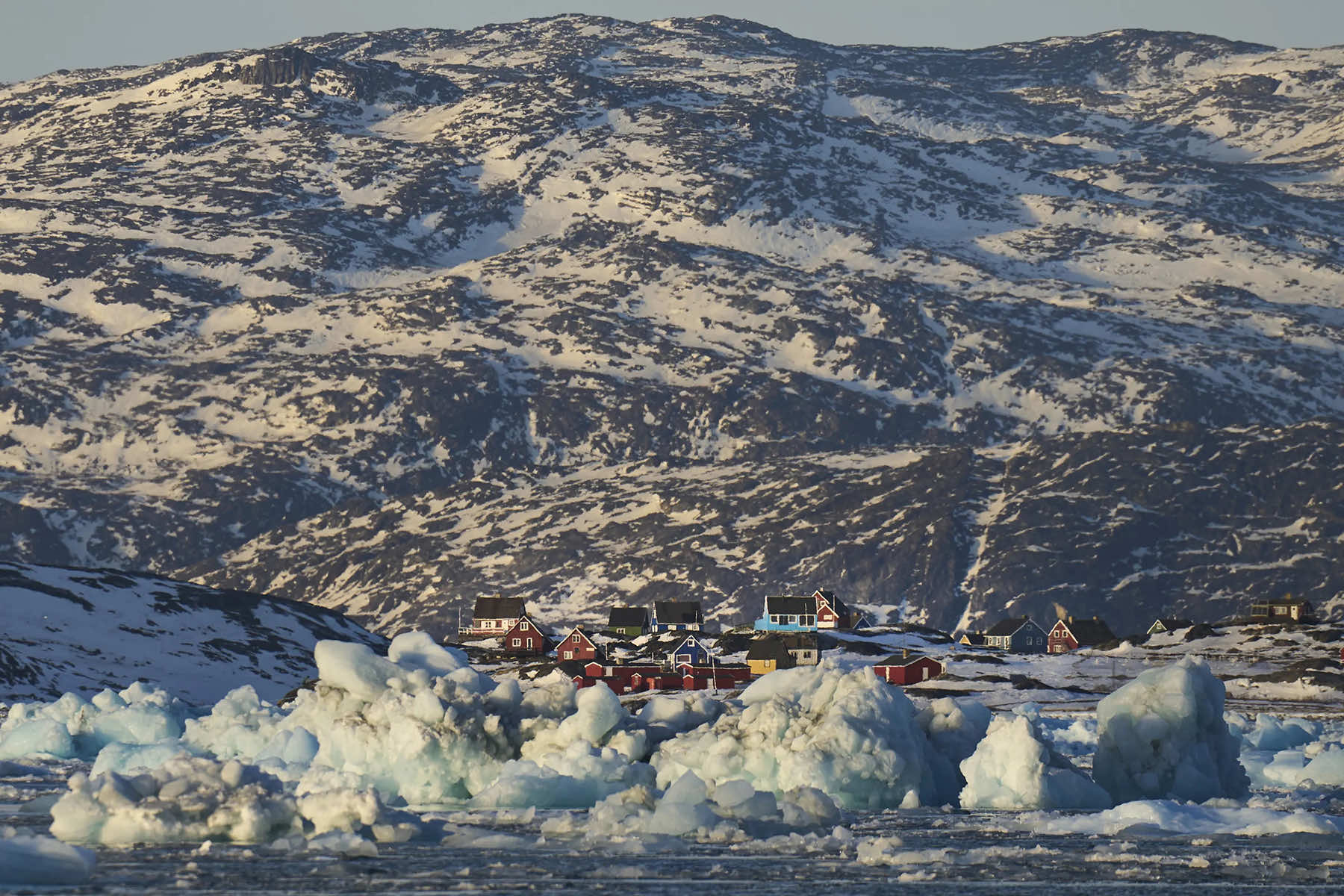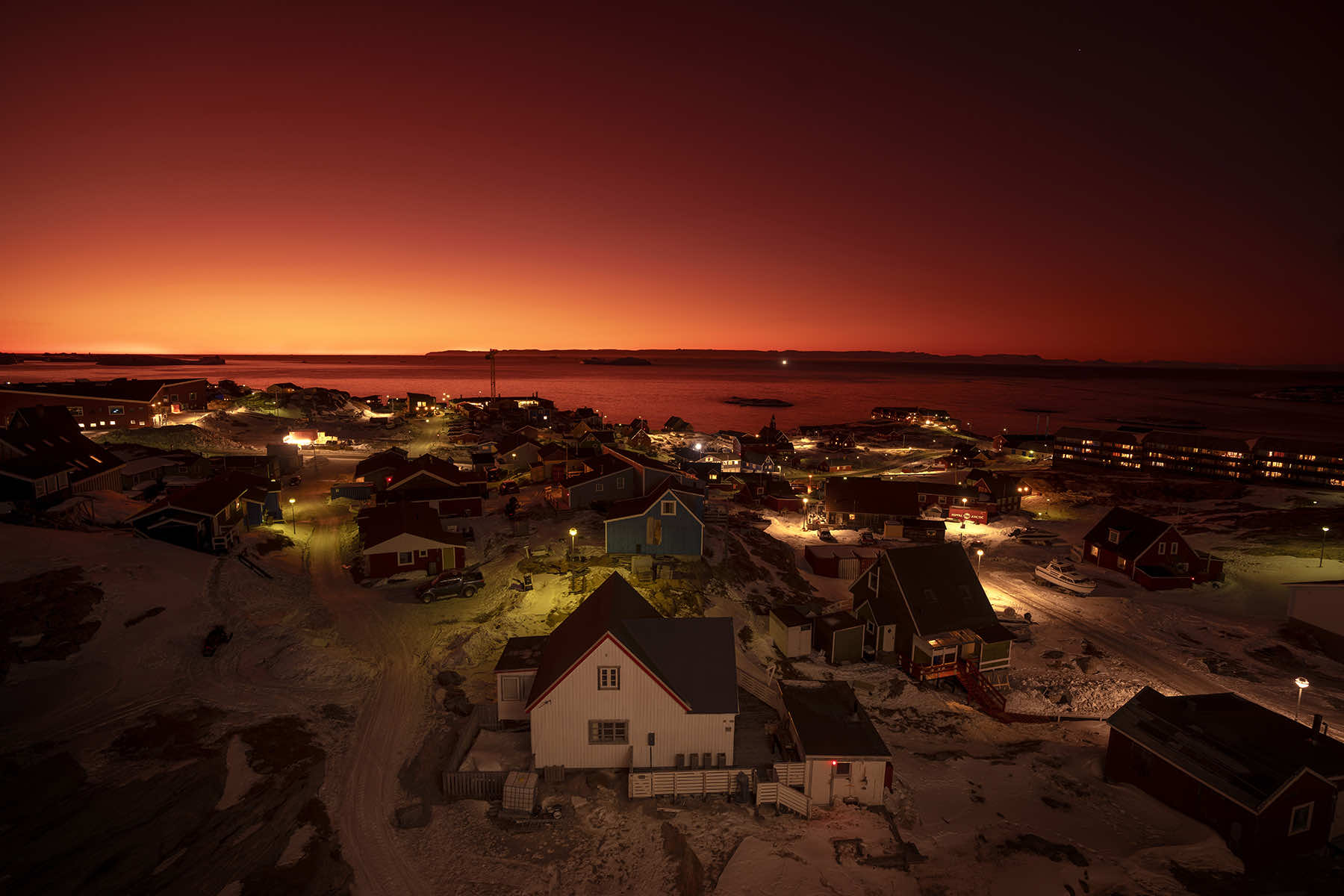
The reelection of Donald Trump signaled an unmistakable pivot in global geopolitics, one that has seismic ramifications for the United States, the Arctic, and the world at large. In light of Trump’s historical interest in Greenland, it is not hard to imagine how his second term could mark the beginning of an aggressive American military and diplomatic campaign to seize control of the island.
That scenario is no longer a far-off hypothetical. It is a distinct possibility that demands serious consideration. Greenland’s strategic importance, its vast natural resources, and its proximity to critical military sites make it an essential asset in the world’s ongoing geopolitical struggle. Under a second Trump presidency, an invasion of Greenland would be a bold declaration of American power, a move that would irreversibly alter the landscape of the Arctic region and beyond.
THE POLITICAL AND STRATEGIC CONTEXT
Trump’s fascination with Greenland is well documented. In 2019, he sought to purchase the island from Denmark, an initiative that received both ridicule and derision from the international community. But beyond the spectacle of a criminally convicted businessman proposing to buy a sovereign territory, there was a sharp strategic calculus at play.
Greenland, an autonomous territory of Denmark, is located in the Arctic, a region that has seen increasing military and economic competition as global powers vie for dominance in the area. For Trump, the idea of securing Greenland was not an act of imperial acquisition for the sake of conquest—it was a calculated move to secure U.S. interests in a rapidly changing world.
There are many aspects to the importance of Greenland. The island provides access to vast energy reserves, including oil, gas, and rare-earth minerals. Those resources will become increasingly vital in the decades to come as the global demand for energy and technology grows. The Arctic’s melting ice cap has opened new shipping routes, transforming the region into a potential goldmine of resources and trade.
Additionally, Greenland’s location makes it a critical point for military infrastructure. The U.S. operates Thule Air Base, a key site for early missile warning systems, satellite tracking, and nuclear defense. Losing access to Greenland could severely hamper U.S. military operations in the region, especially as Russia and China increase their presence in the Arctic.
Trump’s desire to acquire Greenland, therefore, is not simply about territory. It is about asserting dominance in a region that holds strategic military and economic value. As the Arctic heats up in more ways than one, the pressure on the U.S. to secure its interests in Greenland will likely intensify. An invasion, rather than diplomatic acquisition, could well be Trump’s chosen course of action.
THE MILITARY AND DIPLOMATIC PATH TO AN INVASION
The pathway to an invasion of Greenland would not be subtle, and under Trump’s leadership, there would be no hesitance to act unilaterally. As president, Trump has repeatedly demonstrated a willingness to eschew traditional diplomacy in favor of more forceful actions. The early stages of an invasion would likely involve a significant military buildup in the Arctic.
The U.S. would likely position naval forces, aircraft, and special operations units in the region to apply pressure on Denmark and Greenland. These forces would be prepped for an immediate assault should negotiations fail or be perceived as stalling.
Trump’s approach would be uncompromising. Denmark, the current sovereign of Greenland, would be forced into a corner, facing the option of either acceding to American demands or facing the reality of military intervention. Diplomatic tensions would surge, and the U.S. would likely employ a variety of pressure tactics to destabilize Denmark’s position, including economic sanctions, military posturing, and potentially even cyberattacks designed to cripple key infrastructure.
The Trump administration, accustomed to leveraging American power, would likely aim to isolate Denmark diplomatically, forcing it into submission. If diplomacy fails, the next phase would be swift and decisive military action.
Initial strikes would likely target critical military infrastructure in Greenland, particularly Thule Air Base, in order to neutralize any defensive capabilities. The U.S. military would likely use airstrikes and missile attacks to neutralize resistance before deploying ground forces to secure strategic points.
Amphibious landings would follow quickly, with U.S. troops securing key sites on the island, including important natural resource sites and transportation hubs. The occupation of these locations would serve as the foundation for the U.S. to consolidate control over the entire island.
Resistance to the invasion would come not only from Denmark and the Greenlandic people, but also from the international community. NATO, as an alliance, would be caught in a delicate position, as Trump’s actions would violate international norms and potentially fracture the unity of the alliance.
The United Nations would strongly condemn the invasion, but its capacity for meaningful action would be limited. Russia and China, both of which have strategic interests in the Arctic, would respond swiftly, likely increasing their own military presence and pressuring the U.S. to withdraw.
OCCUPATION, LONG-TERM IMPLICATIONS, AND FALLOUT
Once U.S. forces have established control, the true costs of the invasion would become apparent. Greenland’s vast and rugged terrain, coupled with its sparse population, would make it a logistical nightmare to occupy. Unlike other regions that are heavily urbanized, Greenland’s small population and remote geography would present unique challenges in terms of maintaining order and controlling resistance.
While the U.S. military would be able to secure key sites quickly, maintaining a long-term presence would require an ongoing commitment of resources and personnel. The scale of the occupation would necessitate a continuous U.S. military presence in Greenland.
Bases would be established throughout the island, and supply chains would need to be maintained across a vast and challenging landscape. The occupation would place a significant strain on the U.S. military, requiring a steady flow of personnel, equipment, and supplies. With global attention focused on the Arctic, the U.S. would need to fortify its position to prevent outside powers from challenging its control of the region.
The international fallout would be immediate and severe. NATO would likely fracture in response to the invasion, with member states questioning whether to support the U.S. in a violation of international law. European powers, particularly Denmark and other Scandinavian countries, would turn against the U.S., and the economic sanctions imposed by the European Union could cripple the U.S. economy. The relationship between the U.S. and its closest allies would deteriorate, potentially leading to a realignment of global alliances.
China and Russia, both of which have deep interests in the Arctic, would quickly respond. China has already made significant investments in the region, including in Arctic shipping routes and energy projects. Russia, which has a longstanding military and economic presence in the Arctic, would see the U.S. occupation of Greenland as a direct threat to its interests. Both countries would likely escalate their own military activities in the region, leading to a new Cold War-style standoff between the world’s superpowers.
The economic consequences for the U.S. would be catastrophic. The costs of maintaining a military occupation, coupled with sanctions and trade disruptions, would weigh heavily on the U.S. economy. The Trump administration would face growing domestic opposition as the financial burden of the Arctic conflict increases.
Public sentiment could sour as Americans are forced to choose between funding a distant and unpopular war and addressing urgent domestic concerns like healthcare, education, and infrastructure.
TRUMP’S LEGACY AND THE FUTURE OF THE ARCTIC
An invasion of Greenland would have lasting consequences for Trump’s legacy. History would record his second term as a time of reckless expansionism, a period in which the U.S. abandoned its role as a global leader in favor of an isolationist and militaristic agenda.
The invasion would overshadow any of the other criminal activity from his presidency, forever marking his administration as one that prioritized military conquest over diplomacy and global cooperation.
The Arctic would become a zone of intense military competition, with Russia and China jockeying for influence as the U.S. attempts to solidify its control over Greenland. The long-term environmental impact of resource extraction in Greenland would further tarnish the U.S.’s reputation.
A region once known for its pristine beauty and fragile ecosystems would be transformed into a battleground for global dominance. In this new world order, the U.S. would find itself isolated, estranged from its allies, and increasingly at odds with rising powers in Asia and Europe.
THE LOCAL IMPACT OF A GREENLAND INVASION
Though the impacts of a Greenland invasion would be felt across the globe, Milwaukee would not be immune to the fallout. The city’s economy, which has traditionally relied on manufacturing and logistics, would face significant disruption.
The U.S. military’s increased presence in the Arctic would lead to a spike in defense spending, benefitting Milwaukee’s manufacturing sector, which produces critical military equipment. However, the influx of defense spending would be counterbalanced by disruptions in global trade, particularly in shipping and logistics. The city’s shipping industry could suffer, as international sanctions and shifting trade routes affect the global supply chain.
Additionally, Milwaukee’s National Guard would likely be deployed to Greenland as part of the U.S. occupation forces. The city’s military personnel would be sent into harm’s way, leaving families to grapple with the emotional and financial toll of long-term military engagements. This would place a strain on local communities, as many Milwaukeeans rely on the National Guard for income and stability.
Socially and politically, the invasion of Greenland would create deep divisions within Milwaukee. While some residents would rally behind the administration’s brutal actions, others would protest against the military occupation, raising concerns about the diversion of resources from critical local issues like education, healthcare, and infrastructure.
The burden of financing a distant and unpopular war could lead to a political realignment in the city, as citizens demand more focus on domestic priorities. The cost of war, particularly in an era when Milwaukee faces its own economic and social challenges, would weigh heavily on the city’s residents. With tensions mounting, Milwaukeeans would find themselves caught between national and local priorities, as the U.S. economy buckles under the weight of its overreach.
A DANGEROUS PATH FORWARD
In the end, the invasion of Greenland under Trump would be a defining moment in American history. It would be a moment in which military overreach, economic isolation, and diplomatic collapse converged to redefine global politics. Trump’s pursuit of Greenland would mark the absolute unraveling of America’s place in the world, as the nation alienated its allies, antagonized its adversaries, and isolated itself in a bid for dominance in a region of strategic importance.
The cost of Trump’s aggressive action would be felt most acutely in places like Milwaukee, where local communities would bear the brunt of the economic and social consequences of an ill-conceived military adventure. The Arctic, once a zone of cooperation, would be transformed into a flashpoint for global conflict, with the U.S. leading the charge into a new era of dangerous uncertainty.
© Photo
Emilio Morenatti (AP), Rokas Tenys (AP), and Felipe Dana (AP)


















